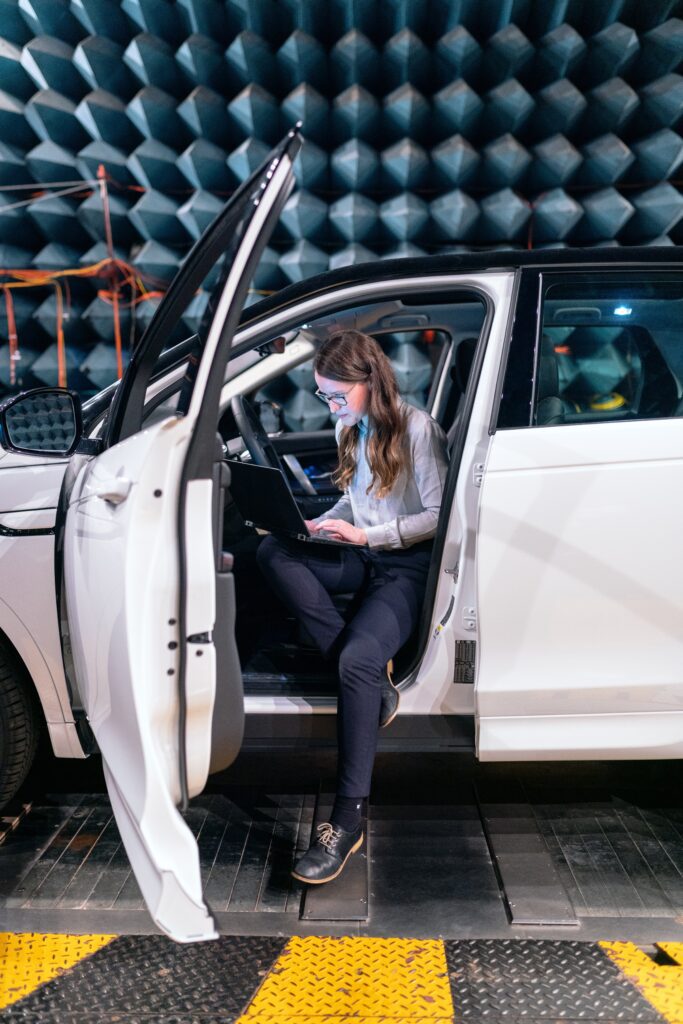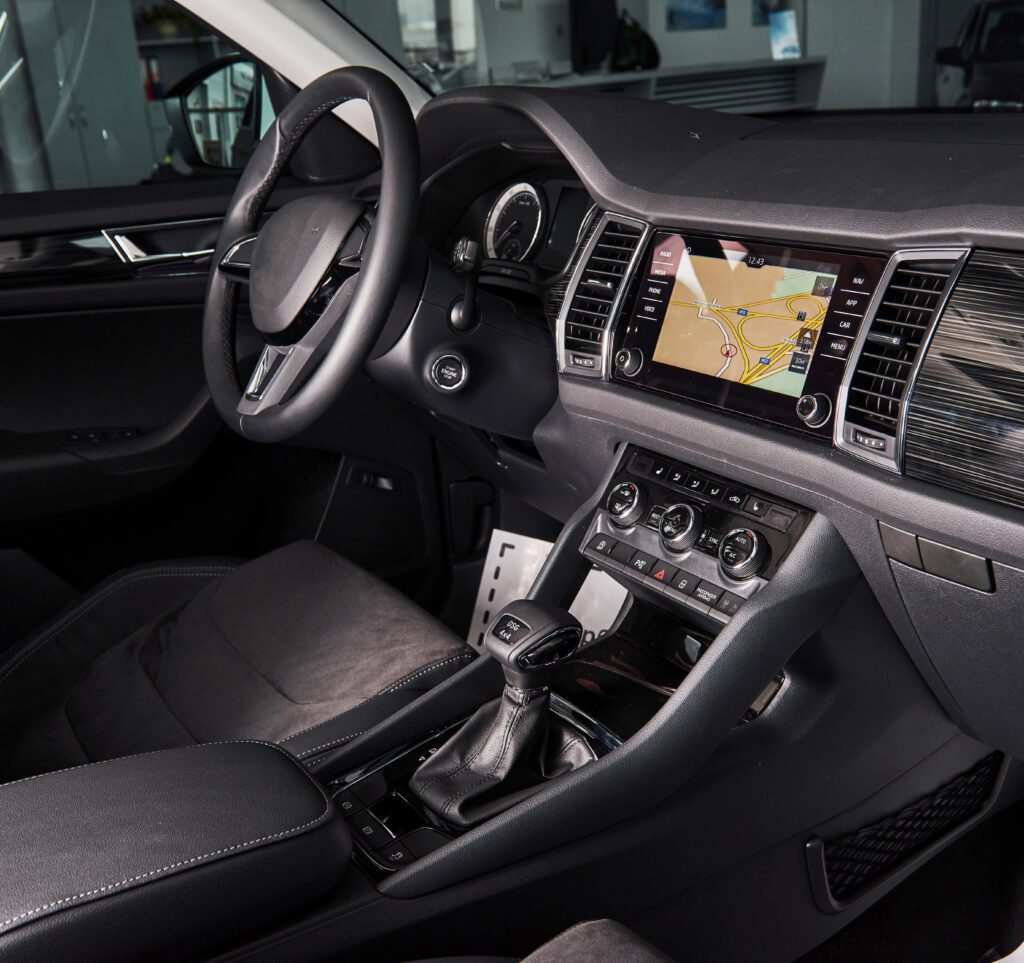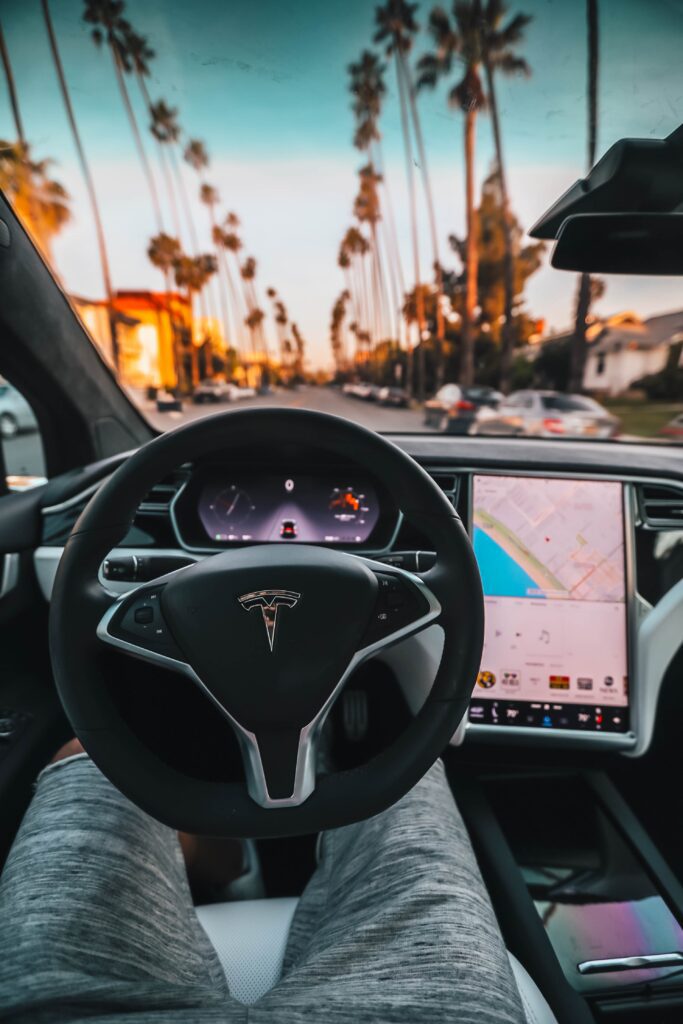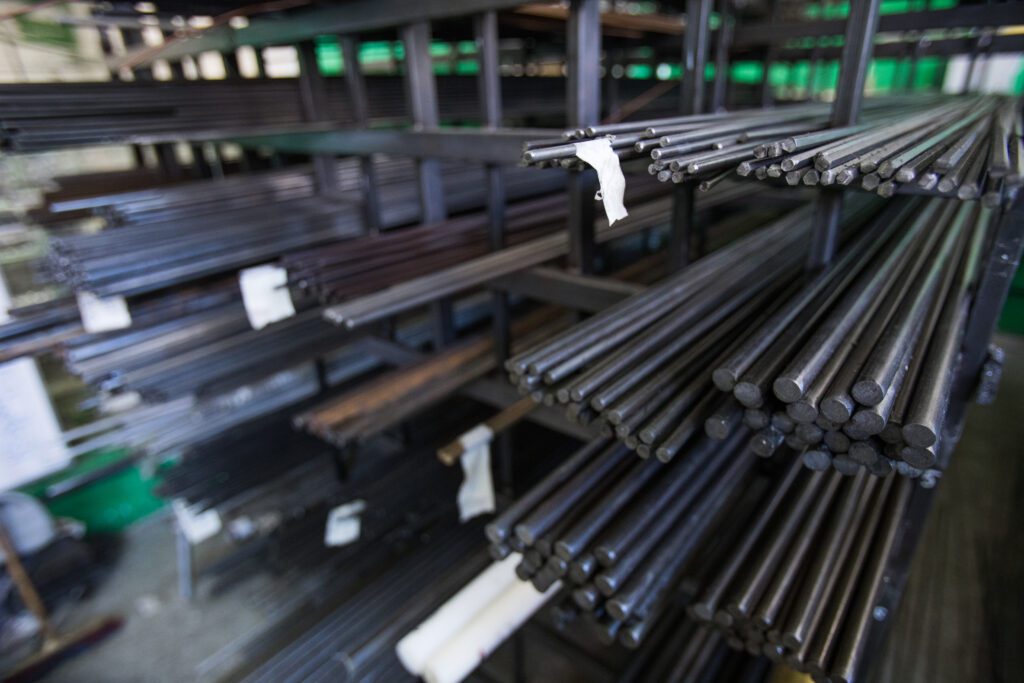Car safety technology is rapidly advancing in the present day, with innovations driven by a blend of technological progress and heightened awareness about the importance of road safety.

As technology continues to accelerate in development and advancement, we will hopefully move toward a world where auto accidents are rare, and driving is safer than ever. To that end, we’re exploring the future of auto safety and the kinds of technologies that will be employed to deliver on the promise of safer roads for everyone. As cars become better at avoiding accidents entirely (and more resilient when they do happen), perhaps we can also expect advancements to help us avoid the most severe weather (like tornadoes and flash floods). What will the world of car safety look like in the era of AI and self-driving cars?
Advanced Driver Assistance Systems
Advanced Driver Assistance Systems (ADAS) have become incredibly sophisticated. Technologies like automatic emergency braking, blind-spot monitoring, and adaptive cruise control are becoming standard features in many vehicles. These systems continuously monitor the vehicle’s surroundings and can take corrective actions, often faster than a human driver might be able to.
ADAS are technologies designed to enhance safety and improve driving. They work by continuously monitoring the vehicle’s surroundings and assisting the driver in various tasks.

At the heart of ADAS are sensors, cameras, radars, and sometimes even lidar systems. These components continuously gather data about the vehicle’s environment. For example, cameras might scan the road for lane markings, while radars could detect the speed and distance of objects around the car. In some sophisticated systems, lidar, which uses laser beams, provides a detailed 3D map of the surroundings.
As technology continues to accelerate in development and advancement, we will hopefully move toward a world where auto accidents are rare, and driving is safer than ever.
Once data is gathered, it’s processed by onboard computers equipped with advanced algorithms. These algorithms interpret the data, detect potential hazards, and in some cases, predict possible future scenarios based on current trends, like the trajectory of a nearby car.
After processing the data, ADAS can assist the driver in a variety of ways. For instance, if the system detects that the car is drifting out of its lane without a turn signal activated, a lane departure warning might be issued, either through visual or audible alerts. Some systems even gently steer the car back into its lane.
Similarly, if the vehicle ahead slows down suddenly and a collision is imminent, the automatic emergency braking system can apply brakes if the driver doesn’t react in time. Other functionalities like adaptive cruise control can adjust the car’s speed to maintain a safe distance from the vehicle ahead, while blind-spot monitoring alerts drivers to vehicles in areas that might be hard to see with traditional mirrors.
Integration with the car’s other systems, such as steering, braking, and throttle, allows ADAS to provide active assistance. It’s important to note, however, that while ADAS can intervene in some situations, the responsibility for safe driving remains with the human driver in most current vehicle models. Over time, as technology evolves and proves its reliability, we can expect an even greater degree of automation and assistance from these systems.
Connectivity plays an increasing role in modern vehicle safety. Cars are becoming more connected, not just to the internet, but to other vehicles and infrastructure. This vehicle-to-everything (V2X) communication can alert drivers about upcoming hazards, traffic conditions, or even the actions of nearby vehicles.

Pedestrian and cyclist safety is also gaining attention. Newer systems can detect pedestrians and cyclists, even in low-light conditions, and automatically brake if a collision is imminent.
The future of ADAS appears to be heading towards greater sophistication, automation, and integration. As technology evolves, ADAS will become more capable, offering broader ranges of assistance to drivers and ensuring safer roadways.
One of the primary trajectories is the progression towards fully autonomous driving. Today’s ADAS features are foundational building blocks for self-driving vehicles. As ADAS systems become more advanced, they will manage more driving tasks, gradually reducing the need for human intervention. In the future, we can expect cars equipped with ADAS to handle complex driving scenarios, navigate challenging terrains, and even communicate with other vehicles and infrastructure.
Vehicle-to-Everything (V2X) communication is another promising area. This technology allows cars to communicate not just with each other but with traffic lights, pedestrian crosswalks, and other infrastructure. Such communication can enhance ADAS capabilities by providing a broader understanding of the environment, anticipating potential hazards, and facilitating smoother traffic flow.
Furthermore, advances in artificial intelligence and machine learning will play a significant role in refining ADAS capabilities. Systems will become better at predicting and reacting to unforeseen events, learning from vast amounts of data, and even adapting to individual driver habits and preferences.

Integrating Augmented Reality (AR) into ADAS is another potential direction. AR could overlay vital information directly onto the windshield, giving real-time feedback about the road, highlighting hazards, or suggesting optimal driving paths.
However, with increased automation and reliance on ADAS, concerns about cybersecurity and the potential for system malfunctions or hacking will become even more critical. Efforts will likely intensify to ensure the security and robustness of these systems.
As ADAS features become standard in more vehicles, regulatory frameworks and industry standards will evolve. Governments and international bodies will work to create a standardized approach to ensure safety, consistency, and interoperability across different brands and regions.
In essence, the future of ADAS holds the promise of making driving safer, more efficient, and potentially even transforming the very nature of transportation as we know it.
Drowsiness Detection
Drowsiness detection systems in cars use various sensors and algorithms to monitor drivers for signs of fatigue and subsequently alert them. One of the most prevalent methods involves using cameras, often placed on the dashboard or the rear-view mirror, to track the driver’s eye movements. These systems analyze the blink rate, duration of eyelid closure, and movement of the pupils. Rapid eye movement, prolonged blinking, or a gaze that drifts can indicate drowsiness.
In addition to eye-tracking, some systems monitor the driver’s facial features, such as the position of the head or the slackness of facial muscles. Drooping of the head or a relaxed jaw might be indicators of fatigue.

Steering behavior can also be a strong indicator of a driver’s alertness. If the system detects erratic steering patterns, such as swerving or consistent minor corrections, it might infer that the driver is becoming less attentive or drowsy.
In more advanced systems, physiological measurements, such as monitoring the driver’s heart rate or skin conductance, might be used. Changes in these parameters can sometimes precede visible signs of drowsiness.
Once the system detects signs of drowsiness, it alerts the driver, usually through a combination of visual, auditory, or tactile signals, like an alarm sound, flashing lights, or seat vibrations. The primary objective is to prompt the driver to either take a break or employ measures to increase alertness.
Materials
The structural integrity of cars continues to improve. Advances in materials science allow for the creation of vehicles that are lightweight for efficiency but also robust enough to withstand and protect passengers during collisions.
Advances in materials science have profoundly impacted the automotive industry, enabling the creation of vehicles that are lightweight yet robust. Traditional steel has evolved into high-strength steels, and even more advanced high-strength steels, which maintain the malleability of steel but offer significantly greater strength. This allows for thinner components without a trade-off in safety.
Aluminum, having a lower density than steel, has seen enhanced alloys that boost its strength and durability. This makes it an increasingly popular choice in car manufacturing for various parts, from body panels to structural components. Carbon fiber reinforced plastics bring together the extreme strength of carbon fiber with the versatility of plastic, offering a high strength-to-weight ratio. While traditionally seen in high-performance and luxury vehicles due to cost, there’s ongoing research and development aimed at making carbon fiber components more affordable for mainstream cars.

Magnesium alloys offer another lightweight alternative. While there have been limitations in its use due to factors such as cost and the challenges associated with forming and joining, new techniques and research are making it more feasible for broader applications.
Polymer composites, which merge polymers with other materials, can replace heavier metal components in some areas of a vehicle, balancing lightness with durability. On the frontier of material science, nanostructured materials are being developed. By manipulating materials at the atomic and molecular levels, scientists can fine-tune their properties, offering enhanced strength or flexibility.
Apart from the materials themselves, the ways in which they’re combined and integrated into vehicles have also seen innovation. New joining techniques, such as improved welding, advanced adhesives, and innovative fastening methods, are essential to ensure that cars remain sturdy, especially when fusing different types of materials together. Moreover, there’s a growing interest in leveraging natural and bio-based materials, reflecting a broader push for sustainability in the automotive industry.
The confluence of these advancements ensures that modern cars are not only lighter, aiding in fuel efficiency and performance, but also maintain, or even enhance, their protective capabilities.
All of these advancements are part of a broader trend towards making roads safer and reducing the number of traffic-related injuries and fatalities.
The Future of the Seatbelt
With all these future-forward advancements in safety technology, it begs the question: will cars someday be so safe that seatbelts are no longer necessary? It seems possible, but there are quite a few hurdles that would have to be overcome first. To begin with, the seatbelt is tried and true—it’s one of those simple, brilliant innovations that, instead of being outmoded, simply gets improved upon over the years. That helps explain why it’s stuck around so long when everything else in auto engineering seems to change as years go on. Next, there are regulatory considerations. Every US state has a requirement for seatbelts to be worn by drivers, and in order for a push to change those laws to be viable, traffic accidents and deaths that seatbelts have a proven record of saving people from would have to be almost nonexistent. But as long as there’s a chance a seatbelt could save your life in an accident, it’s likely that they will be required (and truly, the inconvenience of wearing one seems well worth the risk in that case). If one day cars are fully autonomous, moving on flawless electronic infrastructure which can make traffic accidents a thing of the past, maybe you’ll be free to move about the cabin. Until then, you’ll want to buckle up when driving.

Although many of these advancements are still developing and have yet to reach their full potential, it’s also always a good idea to check if the car you currently drive has any current recalls. Check out nhtsa.gov/recalls to learn more.





